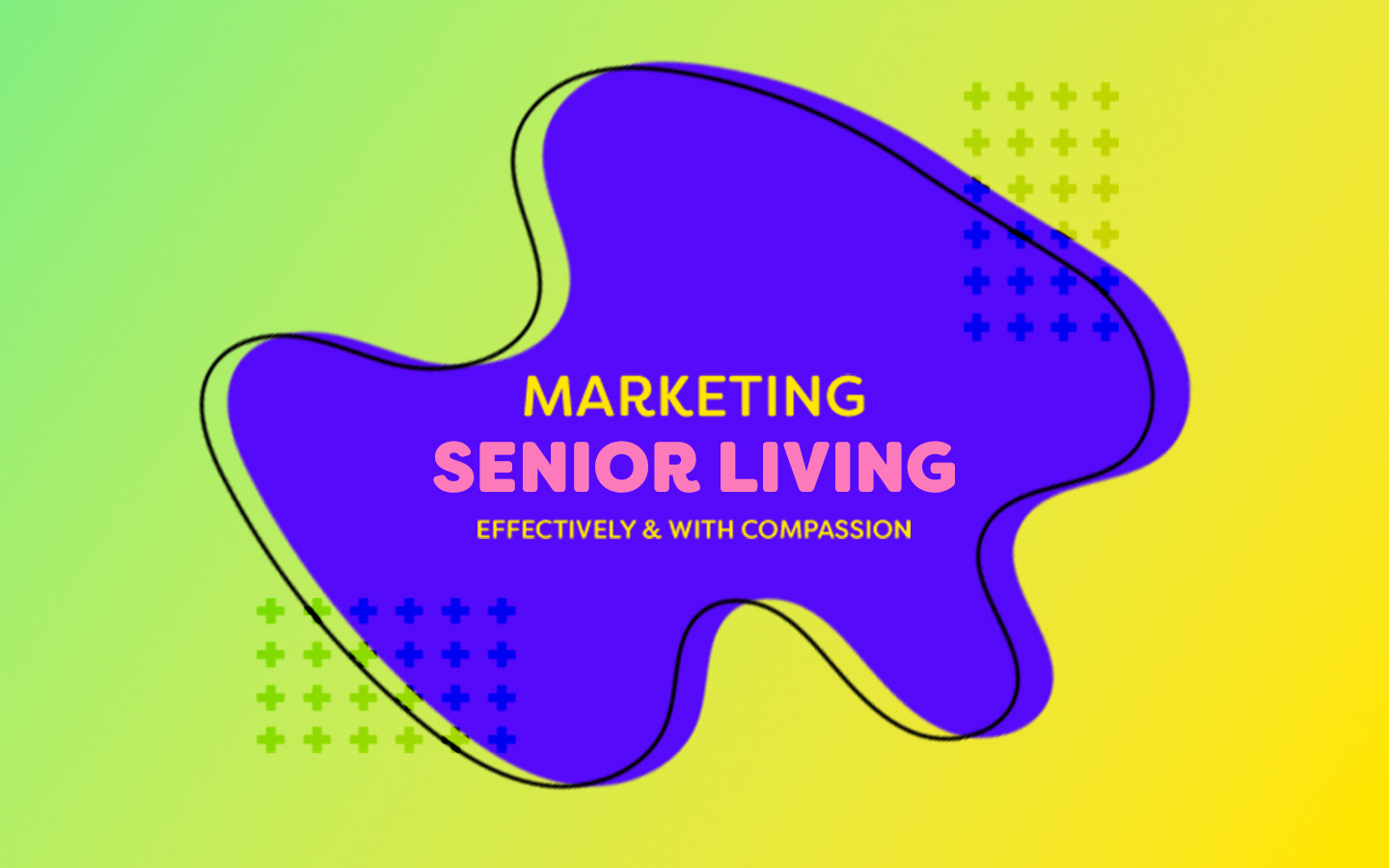
Marketing Senior Living when Fear, Guilt and Emotion Overwhelm your Audience
What are people looking for in senior living? To answer that is to understand the personal circumstances that drive people to explore senior housing options. Generally, adult children are prompted to intervene when the aging parent’s current living situation creates an unsafe environment. The experience is difficult and uncomfortable for both family members, usually not explored until absolutely necessary.
As senior living marketers, we wanted to better understand the needs of the decision makers and find a way to reach them, with compassion and respect in a way that alleviates the emotional roller coaster of caring for an aging family member.
Key Motivator: Forced Need
Not much of a surprise here, but we quickly confirmed what we had inferred – no one wants to embark on this journey. Senior housing becomes a reactive not a proactive response, following a sudden decline in health. In most cases, this is precipitated by an incident, such as leaving the gas stove on and causing a fire, or suffering personal bodily harm. It can also be caused by a loss of mental acuity or a loss of a loved one.
In fact, 75% of the respondents described the process of looking for senior care as “overwhelming” or “depressing”. We can make this process more palatable through our communication, words and the visuals in our websites, marketing materials and collateral pieces.
Marketing Senior Living: Website is the First Stop
Survey participants ranked the website as the most influential component. They wanted to see the following information on a senior living website:
- Specific Pricing Information
- Staff to resident ratio
- Availability to accommodate different stages of care
- Warm and welcoming environment
- Sense of belonging for residents
Other questions they wanted to know included:
- Which renting or buying options are available
- How to decide which level of care fits their loved one
- What the range of activities include
So we asked the children of parents in need of a senior living solution, ranging in different communities including Independent Living, Assisted Living, and Memory Care.
When asked to rate the 5 most important factors in selecting a new living arrangement for an aging loved one – the following are listed in order of value and importance, first being highest.
1. Cost:
The majority of adult children found this to be the most frustrating part of the process. They found the websites confusing and that was when they could find any information on a range of pricing. Most did not want to take a tour or meet a concierge until it was established that they (or the loved one) could afford it. They want clear, concise examples of pricing for each level of care.
2. Quality of Care:
This refers to how the resident is treated, the ratio of caregivers to residents and the attention given to maintaining the health of residence. A key fear among those looking for a place was isolation or what they called “warehousing” their loved ones. This is also where photography comes into play. Photography can address these questions:
- Are the residents interacting with others?
- Do the residents look happy?
- Are they involved in activities?
- Are caregivers lending a hand and exhibiting a good state of mind?
- They also want to know if there are prevention efforts for Covid 19 and other contagions.
3. Environment:
A welcoming, engaging environment helps those looking for a home for their loved ones feel good about their decision and the choice they made. These environmental factors include:
- Warm and welcoming
- Community interaction
- Connection with nature
- Combination of coziness and cleanliness
- Safe
- Activities and classes
- Access to technology
4. Convenience:
Everyone interviewed wanted a location close to their home so that they could visit their loved ones often and stay connected.
5. Food:
While it may not be as important as cost, care, environment and convenience, the recipients found it very important to the experience of the resident.
At the end of the day, marketing senior living comes down to relating to people — not customers, people. If you keep that in mind first, marketing will naturally follow.